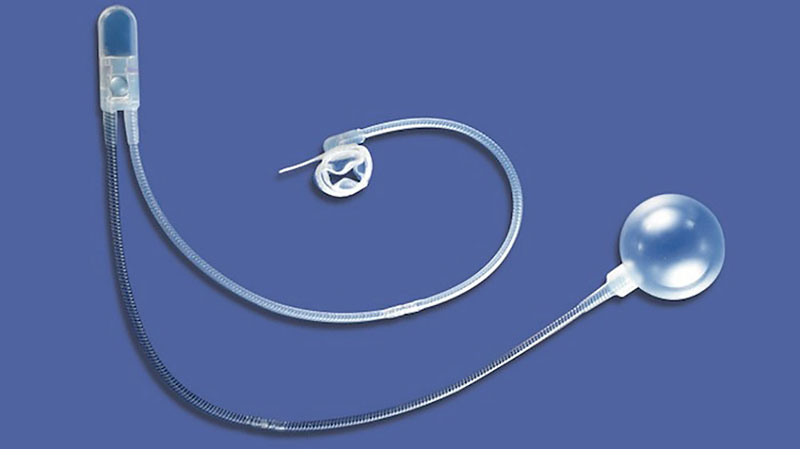Male Incontinence after Radical Prostatectomy, when present, is generally apparent soon after the catheter (placed at the time of surgery) is removed. Often this resolves after a period of weeks to months. Therefore, surgical treatment of incontinence in men is not indicated soon after prostate surgery. Incontinence after radiation may develop with time as the radiation side effects for prostate cancer treatment are often delayed.
The reason many men leak urine after prostate cancer treatment is sphincter insufficiency. The problem is often not an “overactive bladder” and therefore, medications that relax the bladder are generally not effective, especially for severe incontinence. One established treatment option for male urinary incontinence is placement of an artificial urinary sphincter.
The artificial sphincter was developed by American Medical Systems and the product is an AMS 800 Artificial Urinary Shincter. Prior to surgery, it is important to confirm that the bladder functions normally and that there is no bladder neck obstruction or urethral stricture disease or urinary tract infection.

AMS 800 Artificial Urinary Sphincter
Surgery is performed through a small transverse incision in the scrotum at the base of the penis. A fluid filled cuff wraps around the urethra to compress the urethra. This cuff is connected to a pump by tubing and the pump is located in the scrotum under the skin. This pump is also connected by tubing to a fluid reservoir. When the pump is squeezed, fluid is transferred from the cuff to the reservoir, relieving the urethral compression, allowing the patient to urinate. The fluid then slowly returnt to the cuff, allowing the man to remain continent when not urinating.

AMS800 Artificial Sphincter in position

